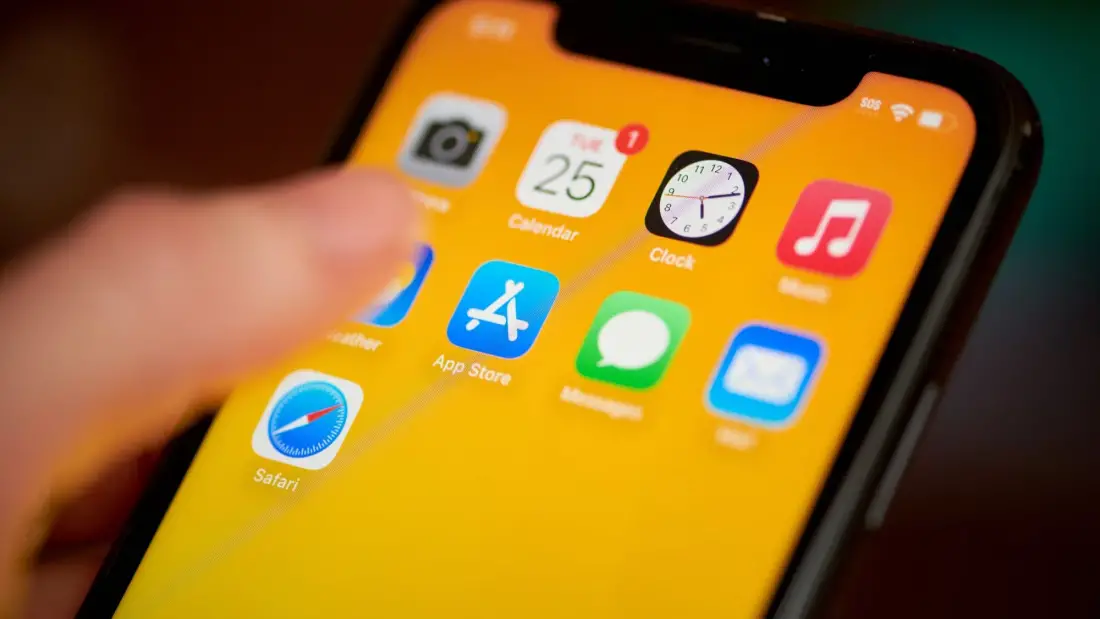How a routine journey from Foz do Iguaçu to São Paulo turned into a baffling tragedy—and exposed Brazil’s booming device-smuggling underground.
1. The Bus Ride That Ended in Tragedy
On the evening of July 29, 2025, a 20‑year‑old woman boarded a bus in Foz do Iguaçu, a city perched on Brazil’s southwestern border. Her destination: São Paulo, Brazil’s sprawling financial and cultural hub. The journey should have been ordinary, familiar to countless travelers moving between states. Instead, it ended in tragedy—and in a mystery unprecedented in Brazilian criminal history.
As the bus passed through Guarapuava, Paraná, the woman began complaining of difficulty breathing. Witnesses say she convulsed. The bus stopped. Paramedics arrived and attempted CPR for 45 harrowing minutes, reportedly contending with seizures and worsening respiratory distress. She was pronounced dead at the scene.
And then the surreal part: as medics treated her, they discovered 26 iPhones glued to her body—hidden under clothing, taped to her skin in packages. Investigators also found several bottles of alcohol in her luggage.
Just what she was doing with 26 high‑value smartphones strapped to her was a baffling sight. Her identity remains undisclosed. Her motive, unknown. And with no public record or explanation, the world was left scrambling for answers.
2. What Police Have Said — And What They Haven’t
Local authorities have been cautious.
The Paraná Civil Police released a statement via NDTV World and other outlets:
“The Paraná Civil Police are investigating the case and awaiting the conclusion of forensic reports to clarify the cause of death.”
They confirmed she was traveling alone from Foz do Iguaçu to São Paulo, and that no illegal drugs were detected by sniffer dogs—though potential intoxicants like alcohol were found in her baggage.
The 26 iPhones were seized and handed over to Brazil’s Federal Revenue Service for further investigation. The woman’s body was sent to the Forensic Medical Institute, where toxicology and cause-of-death findings are pending.
That silence has only deepened public fascination.
3. Theories Take Shape: Smuggling, Overdose, or Something Else?
News sources, including Times of India, Hindustan Times, CTV News, and New York Post, have floated the primary theory: phone smuggling. Brazil has become a hotspot for illegal imports of premium smartphones—especially iPhones—that command high retail prices due to Brazil’s steep import taxes and tariffs.
The deceased woman may have transported the phones concealed beneath clothes—secured with glue or tape to evade theft or detection. Once she collapsed, the phones became part of the bizarre tableau that shocked local responders and international observers.
Alternative theories abound: some experts suggest severe allergic reaction to glues or adhesives, heat exhaustion, or even cardiac event exacerbated by the added weight or stress of carrying dozens of devices tightly against the body.
Without forensic data, these remain speculation. What’s clear is that her death has become a symbol of something much larger.
4. Brazil’s Hidden Smartphone Black Market
Smuggling smartphones into Brazil is a high-stakes industry. According to a 2024 report cited in Forbes, nearly 25% of all mobile phones sold in Brazil were illegally imported. That percentage equates to millions of devices and billions of reais in untaxed revenue.
In 2025 alone, seizures of smuggled smartphones reached R$180 million in the first five months, increasing to approximately R$224 million by May—nearly a 23.9% increase year-over-year New York Post+8Hindustan Times+8The Times of India+8The Sun+4UNILAD+4New York Post+4www.ndtv.com+3The Sun+3New York Post+3CTVNews+6www.ndtv.com+6UNILAD+6CPG Click Petroleo e Gash2foz.com.br+1CPG Click Petroleo e Gas+1. Authorities estimate around 10,000 phones cross the border into Brazil daily, frequently via Paraguay.
These devices are often hidden in false compartments—inside cleaning robots, helmets, beer kegs, or strapped directly to bodies. Smugglers sometimes use motorcycles to ferry phones across the Friendship Bridge linking Paraguay and Brazil—nearly 82 motorcycles seized at customs between January and May 2025 were found with false compartments, carrying nearly 75,000 phones valued at R$84 million h2foz.com.br+1CPG Click Petroleo e Gas+1.
5. The Economics: Why Brazil—and Why Smuggle?
Why risk such danger?
Brazilian consumers pay roughly $1,400 for a new iPhone—compared to $800 in the U.S.—because of import taxes and regulatory fees AccioNewsendip. Smuggled phones can sell for half that price, making them attractive despite legal risk.
The smuggling trade is lucrative enough to fuel organized networks. According to customs officials, these rings operate like any other criminal enterprise—routing supplies through Paraguay and Bolivia, using couriers or “mules,” and distributing small batches to avoid detection www.ndtv.com+2Accio+2UNILAD+2.
The economic impact is huge: Brazil’s illegal phone market in 2023 reached R$527 million, with projected losses rising annually unless enforcement or policy changes.
6. The Human Cost: Smugglers, Mortality, and Motive
While statistics highlight volume and value, the human side is rarely visible—except in tragedies like this. Was the woman aware of the danger? Did she know the health risks? Did poor ventilation, heat, or adhesive toxicity contribute to her collapse?
Smugglers often recruit vulnerable individuals—students, low-income workers—promising quick cash. But many underestimate the physical toll: carrying dozens of phones glued to the skin can restrict breathing, increase body temperature, and cause severe strain in suffocating environments like a sealed bus.
Without definitive autopsy reports, we may never know the exact casualty mechanics. What remains clear: her death was not merely criminal. It was deeply human—and preventable.
7. A Global Mystique: How the Story Captured the World’s Imagination
Why did this story go viral? In part because it’s surreal: phones glued to a body, hidden smuggled cargo, and a young woman collapsing mid-journey.
Media outlets from India to Canada, Europe to the U.S., picked up the case—repeating variants of the “26 iPhones glued to her” angle. Commenters reacted with astonishment, humor, and sadness.
For many, her name became iconic—even if she remains unnamed. She became “the iPhone smuggler,” a mnemonic shorthand for Brazil’s smuggling epidemic and the risks it hides beneath night bus seats and border crossings.
8. What’s Next: Forensic Results and Federal Investigations
Authorities remain tight-lipped—but pressures are mounting.
The Paraná Civil Police are awaiting toxicology results that could explain the breathing issues, seizures, and cardiac arrest Facebook+7www.ndtv.com+7New York Post+7. If adhesives contributed, or if she carried alcohol, those results could shape public safety policy.
Meanwhile, Brazil’s Federal Revenue Service is analyzing the seized phones—looking for serial patterns, activation regions, and transaction chains. If they can tag shipments to Paraguayan networks or Mexican parts, they may track the smuggling route—and possibly dismantle broader operations.
Local politicians in Paraná have already called for increased border enforcement, more customs scanners, and stiffer penalties for smuggling.
9. Beyond Brazil: Lessons on Smuggling and Governance
Brazil’s phone smuggling epidemic resembles other illicit economies—like cigarette or fuel smuggling, or counterfeit luxury goods trafficking. It thrives on price disparities, porous borders, weak enforcement, and consumer demand.
Experts warn: unless Brazil addresses tax rates, improves border management, and invests in public awareness, tragedies like this may become recurring headlines.
On the other hand, reducing taxes on legitimate imports could undercut the smugglers—but at a cost to domestic fiscal revenue. It’s a policy dilemma with no easy answer.
10. A Final Reflection: Who Was She?
We may never know. But her death forces us to ask uncomfortable questions:
-
How far would someone risk to earn money?
-
What vulnerabilities push people into smuggling deadly cargo?
-
What responsibility does government have to protect—and not punish—the desperate?
Her journey, from Foz do Iguaçu to Guarapuava to São Paulo, ended in a surreal tableau: a body, a seizure, and 26 iPhones taped to her skin. But beneath that image lies a deeper tragedy—of inequality, of global economies, and of young lives caught between borders, taxes, and opportunity.
Summary Table
| Aspect | Detail |
|---|---|
| Death | Cardiac arrest and seizure mid-bus trip |
| Devices | 26 iPhones glued to her body; more inside luggage |
| Sniffer dog results | No drugs detected |
| Forensic status | Autopsy and toxicology pending |
| Police agency | Paraná Civil Police |
| Device seizure custody | Brazil’s Federal Revenue Service |
| Smuggling statistics (2025) | 25% of phones illegal; R$224M seized in 5 months; 10K devices daily |
| Border hub | Foz do Iguaçu & Paraguay routes |
| Common smuggling means | Motorcycle couriers; hidden compartments; body concealment |
Final Thoughts
This case is a striking intersection of human tragedy and systemic failure. It exposes the hidden networks feeding Brazil’s enormous demand for tech, the desperation of couriers risking arrest or death, and the yawning gap between public policy and real lives.
As investigations continue and forensic reports surface, perhaps we will uncover definitive answers. But the image of a young woman, lifeless with iPhones glued to her body, will linger—forcing us to wrestle with the cost of smuggling economies, the limits of enforcement, and the fragility of life under pressure.

Ethan Blake is a skilled Creative Content Specialist with a talent for crafting engaging and thought-provoking narratives. With a strong background in storytelling and digital content creation, Ethan brings a unique perspective to his role at TheArchivists, where he curates and produces captivating content for a global audience.
Ethan holds a degree in Communications from Zurich University, where he developed his expertise in storytelling, media strategy, and audience engagement. Known for his ability to blend creativity with analytical precision, he excels at creating content that not only entertains but also connects deeply with readers.
At TheArchivists, Ethan specializes in uncovering compelling stories that reflect a wide range of human experiences. His work is celebrated for its authenticity, creativity, and ability to spark meaningful conversations, earning him recognition among peers and readers alike.
Passionate about the art of storytelling, Ethan enjoys exploring themes of culture, history, and personal growth, aiming to inspire and inform with every piece he creates. Dedicated to making a lasting impact, Ethan continues to push boundaries in the ever-evolving world of digital content.
